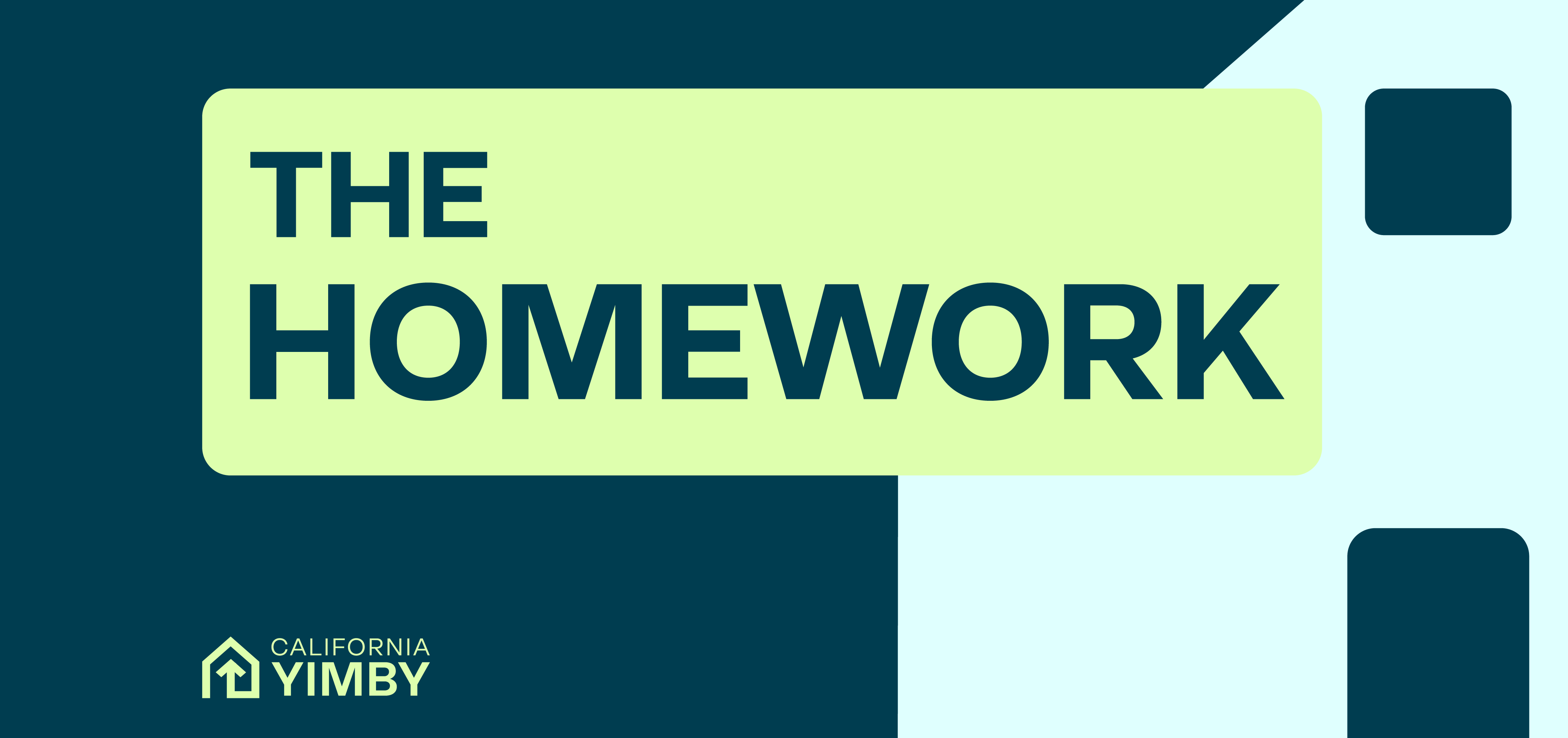The HomeWork: December 12, 2019

Welcome to the December 12, 2019 edition of The HomeWork, the official newsletter of California YIMBY. In each edition, we aim to support grassroots YIMBYs with the most up-to-date thinking on how to end the housing shortage. The Homework offers top news clips, cutting-edge research by leading academics in housing and related studies, and the latest writings from the California YIMBY team on our blog.
We welcome your ideas and feedback — send story tips and ideas to Homework@cayimby.org.
Did someone forward this email to you? Sign up to get it here.
Houser Headlines
Good with coffee and avocado toast:

- “People are falling into homelessness because we have not built enough housing.”
- Could California’s 3.5M home deficit be solved through rezoning?
- “We in transportation have to clean up the mess of bad housing policy.”
- AIDS group faces third defeat on high-rise lawsuit
A Room for Views
California YIMBY brings you summaries of cutting-edge research from the nation’s top housing experts. In this edition:
The United Nations Says: Sprawl is Killing the Planet —
- Construction materials, not just buildings themselves, are becoming more energy efficient.
- Living in denser environments can yield major emissions reductions.
- Regressive subsidies for homeownership should be reversed to encourage more compact, sustainable dwellings.
- Single-family neighborhoods in the nation’s largest metro areas have increased by almost 40 percent since 1990, “largely at the expense of neighborhoods that offer a more diverse mix of housing types.”
- As opportunity grows in cities, some neighborhoods have become more restrictive in their housing supply. 25 percent of neighborhoods that had more mixed housing stock in 1990 became predominantly single-family by 2016.
- Opportunity and density have effectively been bifurcated. New construction of affordable housing has been largely concentrated in denser neighborhoods, but when built in Single-Family tracts, it has improved neighborhood conditions for subsidized residents.
Spicy Guacamole



From the YIMBY Blog
Meet Eric, a Super Commuter: “On most days, I wake up at 4:30 a.m., commute from Sacramento to the South Bay Area, and return home at around 9 or 10 pm. If there’s an accident on the way to work, I might not make it in on time.”
What We’re Reading
We’re obsessed with solving the housing crisis, and our nightstands are stacked with writings on the topic. Here’s what we’re reading this week:
American Neighborhood Change in the 21st Century: Gentrification and Decline —American Neighborhood Change in the 21st Century is a detailed analysis of neighborhood economic expansion and decline across the United States, from the Institute on Metropolitan Opportunity at the University of Minnesota. Its findings show that “the most common form of American neighborhood change, by far, is poverty concentration. About 36.5 million residents live in a tract that has undergone low-income concentration since 2000. In addition, at the metropolitan level, low-income residents are invariably exposed to neighborhood decline more than gentrification. As of 2016, there was no metropolitan region in the nation where a low-income person was more likely to live in an economically expanding neighborhood than an economically declining neighborhood.”
Share the good word
Thanks for reading to the end of the newsletter. Like what you read or have feedback?
Reply to this email, pass it along, and encourage your friends to sign up.

